Ever since the 2011 documentary “Jiro Dreams of Sushi” was released, Sukiyabashi Jiro, the restaurant and its 87 year old master sushi chef, Jiro Ono have become world famous. The original branch helmed by Jiro and his oldest son, as well as the second branch, a mirror image of the first location, and run by Jiro’s youngest son, Takashi, are Michelin starred restaurants. A meal at either restaurant will undoubtedly set you back a minimum $250 USD but it is money well spent for anyone wishing to taste the best of this much loved Japanese cuisine.
Here is what a meal at the most famous sushi restaurant in the world entails.
**Disclaimer this was at the second Jiro location in Roppongi Hills.
Both Roppongi and Ginza, where the Jiro restaurants are located, are posh, beautiful areas of Tokyo. Unlike the original Ginza location, which is actually in the metro station, this branch is in Roppongi Hills, a very upscale hub of shops, restaurants and apartments. The restaurant is deeply tucked in the back of a nondescript building and the entrance only has the restaurant name written in Japanese, making it very easy to miss for foreigners. A reservation is not only necessary but can also be hard to come by (especially for Ginza) so be sure to plan well in advance. A cancellation fee is applicable for the day of and tardiness is not accepted.

Upon entering, a friendly woman greets and seats you at one of two small tables as you are given a drink and hand towel to cleanse your pallet and prepare you for the meal ahead. You are then escorted to a seat at the sushi bar and asked if you would like sushi only or a combination of sushi and sashimi, and if there are any dietary restrictions.
Jiro is notoriously stone-faced and speaks very little English, making patrons feel rushed and self-conscious, yet the atmosphere of his son’s restaurant is much more relaxed and open. Takashi speaks very decent English as does at least one of his assistants. Takashi trained at his father’s restaurant for 23 years and has been running this branch for an additional 11 years. As per the documentary, an apprentice in a Jiro restaurant must train for a minimum 10 years and it takes 3 years before one is even allowed to touch a knife. Throughout the meal, various patrons were instructed how to properly hold chopsticks, what fish not to dip in soy sauce, and how to properly dip (the fish not the rice should touch the soy sauce). Here chopsticks are only a suggestion, and picking the fish up with your hands is more than acceptable. It is also encouraged to eat the fish as quickly as it is placed in front of you since the temperature of the rice is seriously calibrated and believed to be best immediately after being prepared.

The menu reflects what is freshest as trips to the Tsukiji Fish Market (the largest in the world) are made every morning.
The meal started with flounder (karei), a fish seemingly uncommon outside of Japan but one that shouldn’t be. It is delicate and sweet.

Suid (ika) was next and had a chewy but firm texture. Much better than other squid and despite its consistency, it was not tough at all.
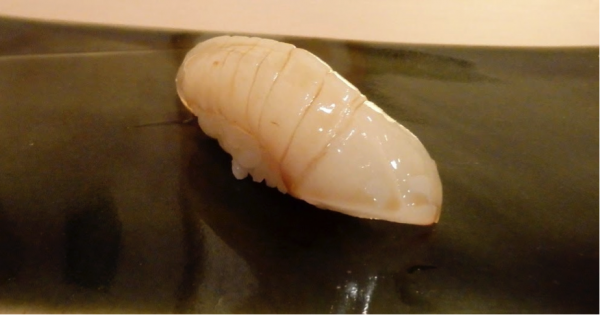
The third piece was large scallop that maintained a firm texture and rich taste. An apprentice brought out the scallop shell to show how large it truly was, probably measuring about 10 inches long.
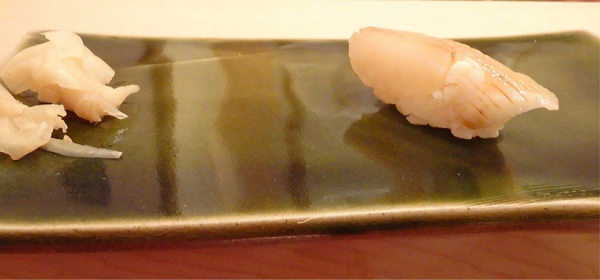
Next in line was the first in a trio of tuna pieces, starting with lean tuna (akami). Most sushi lovers are familiar with this fish yet this one offered truly soft texture and a very vibrant color. Takashi also mentioned this is his favorite cut of tuna.
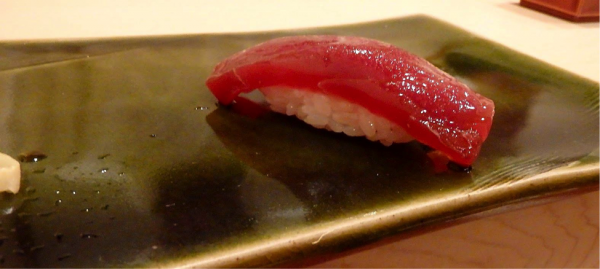
The medium fatty tuna (chu-toro) was a lighter pink color with much more visible fat evenly distributed throughout the cut. It was perceptibly more buttery than the lean tuna.
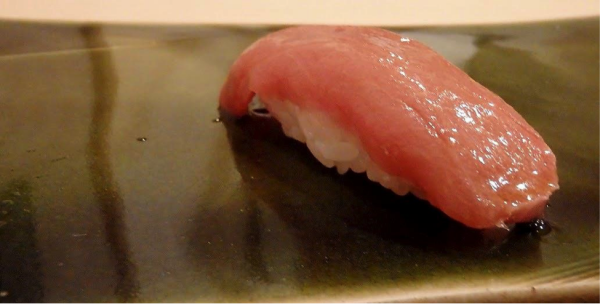
The fatty tuna (oo-tuna) truly melt-in-your-mouth delicious.
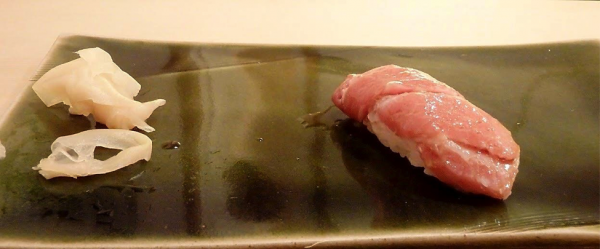
Following the tuna was gizzard shad (kohada) which is a type of herring. It is served with the stunningly shiny skin intact and brushed with a salt and vinegar marinade. The marinade was a bit strong coming from such delicate tuna however, and not a favorite piece.
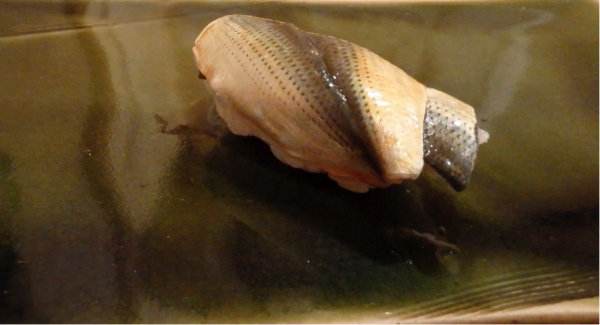
Next up was arc shell clam (akagai). This distinctive looking sushi had a strong taste and rubbery crunchiness that is unique and invigorating.
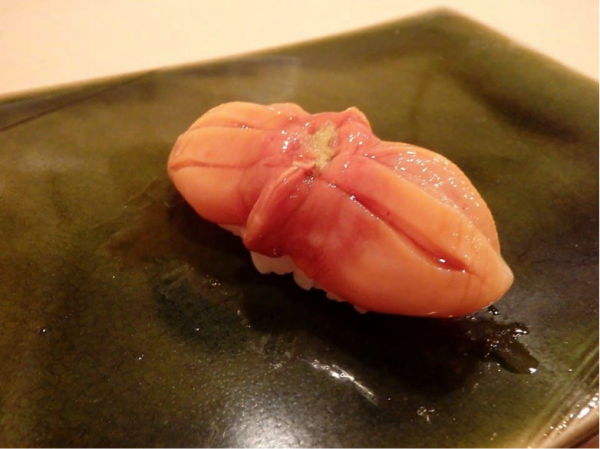
Moving from shellfish back to fish, the next piece was sardine (iwashi), which was exceptionally good. Most Americans don’t eat sardine and only picture it as canned and overly salty, yet here, there wasn’t even a slight hint of fishiness.

The 10th piece was salmon roe (ikura). This sushi is generally disliked by many Western sushi patrons for its odd look and texture. Jiro specially prepares it in house and it tasted far better than others we’ve tried. The perceptible difference in temperature between the cool roe and perfectly warm rice is more apparent here than in any previous piece.
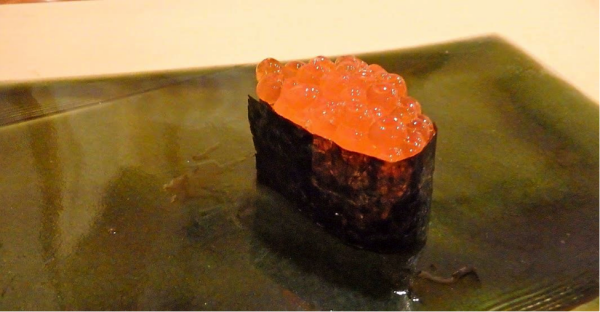
After, was jack mackerel (aji). Markel can sometimes be qualified as salty or fishy but this was very delicate and a standout piece.
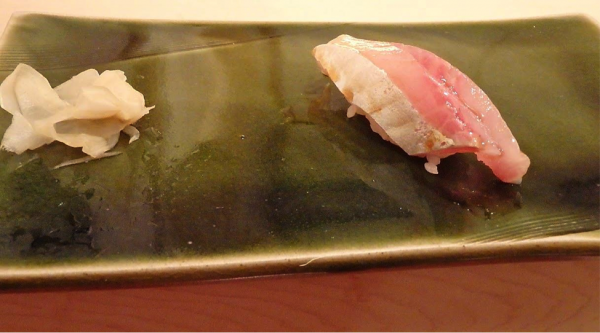
Continuing with the impeccable flavors was Japanese imperial prawn (kuruma-ebi). This shrimp is huge and divided into two pieces. One is instructed to eat the tail end first as a way to work up to the head which has much more vibrant flavors. The texture is perfect and the head does have a complex and fantastic flavor.
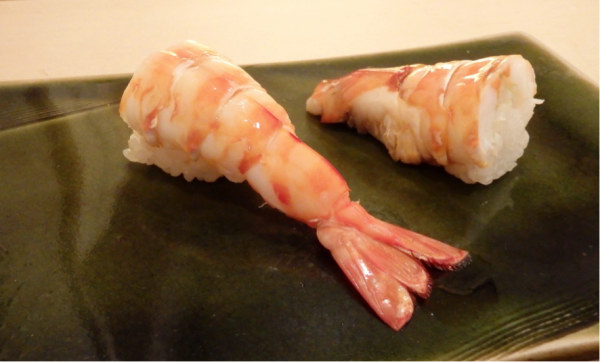
The 13th piece was blue mackerel (saba). Only a thin slice of skin was left on to cut down on the fishy flavor. Despite accomplishing this, it was coated in the same salt and vinegar marinade as the gizzard shad and tasted very salty.
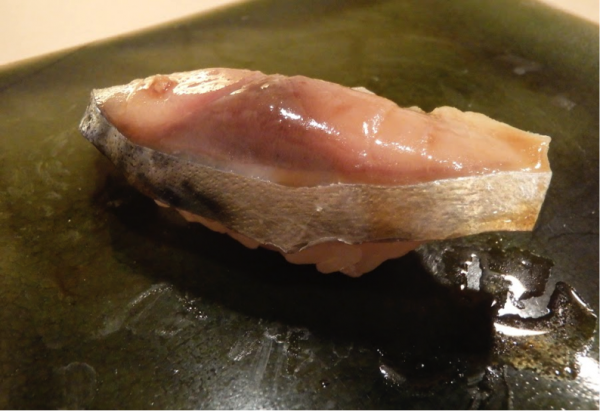
Sea urchin (uni) was next. It was unbelievably creamy and soft.
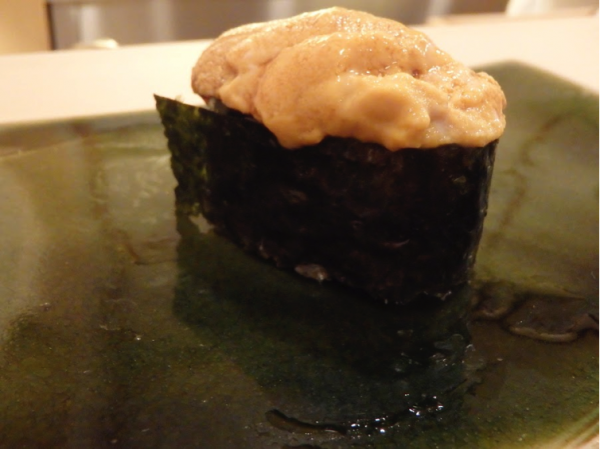
King clam (hamaguri) presented an opposite flavor with a firm texture yet delicate taste.
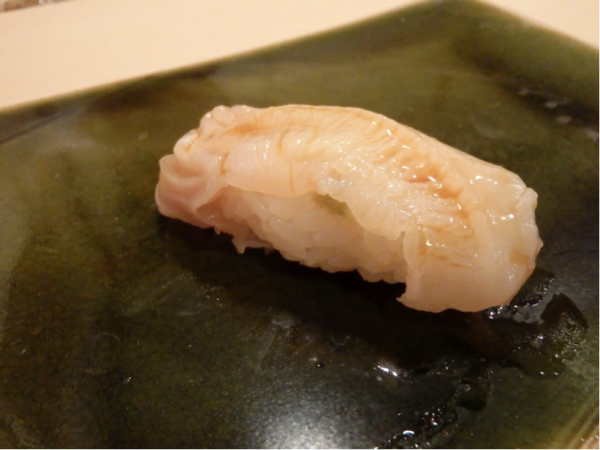
The last piece of shellfish was small clam (kobashira) wrapped in seaweed. An easy and delicious bite.
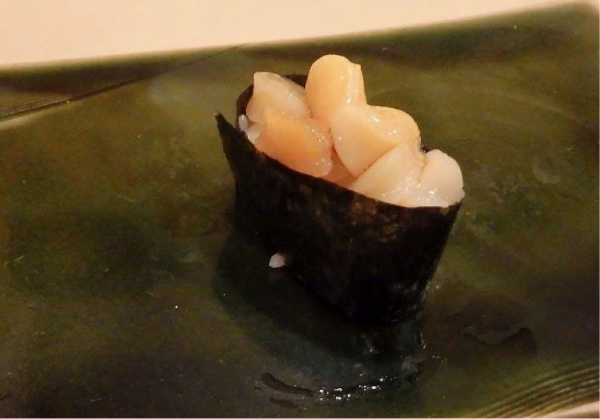
Smoked bonito (katsuo) had a very strong smoky flavor that played off the delicate taste of the fish.
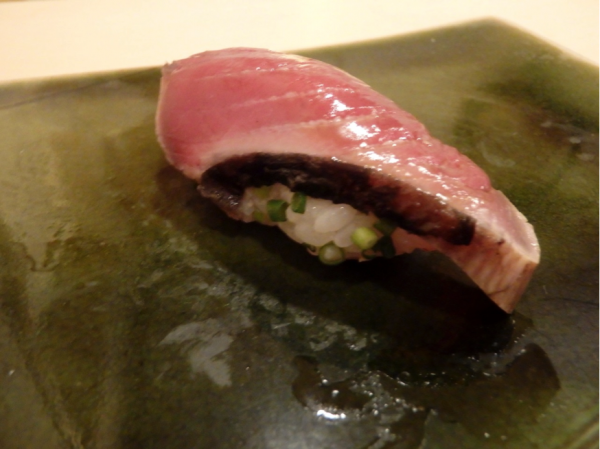
The 18th and final piece of sushi was saltwater eel (anago). It was covered in a traditional sweet sauce with a lean and very light flavor.
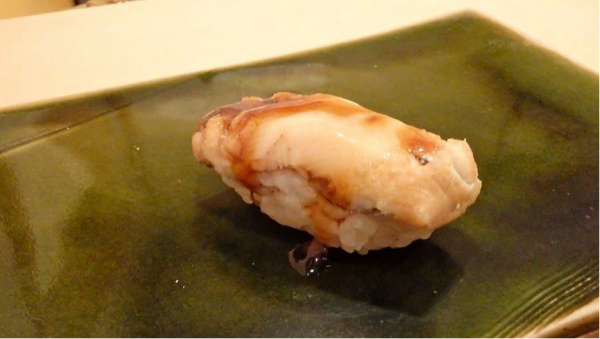
And rounding out the meal was the infamous egg omelet (tomago). It was very fluffy and sweet, not what you would usually expect from an egg dish.
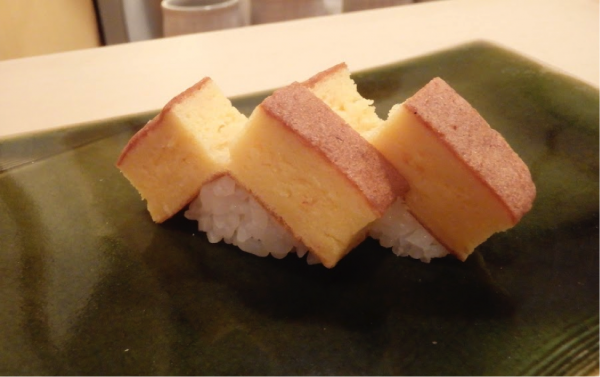
The knife skills of the chefs here are unbelievably calculated yet beautifully fluid. The work of the chef and his main assistant felt like an exquisitely choreographed ballet; every movement had a purpose. The meal unquestionably offered some of the highest quality and freshest fish in the world. Yet as believed by all master sushi chefs, the true beauty lies in the rice. It is perfectly cooked in a vinegar mixture and then meticulously molded for each bite.
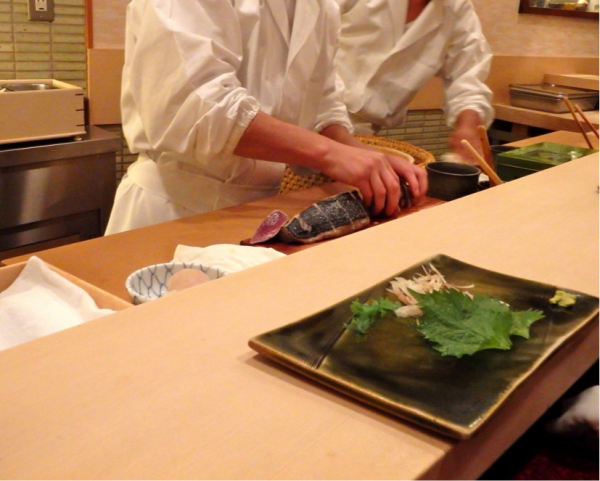
Despite hearing stories of being quickly rushed through the meal in under 30 minutes at the Ginza location, this meal took a bit longer plus plenty of conversing afterwards. Patrons could also taste additional new pieces of sushi or re-try their favorites for an added price. Takashi also took the time to ask each person a bit about themselves and took a picture with anyone who wanted.
Eating at Jiro is far more than just getting dinner, it is a true culinary experience.

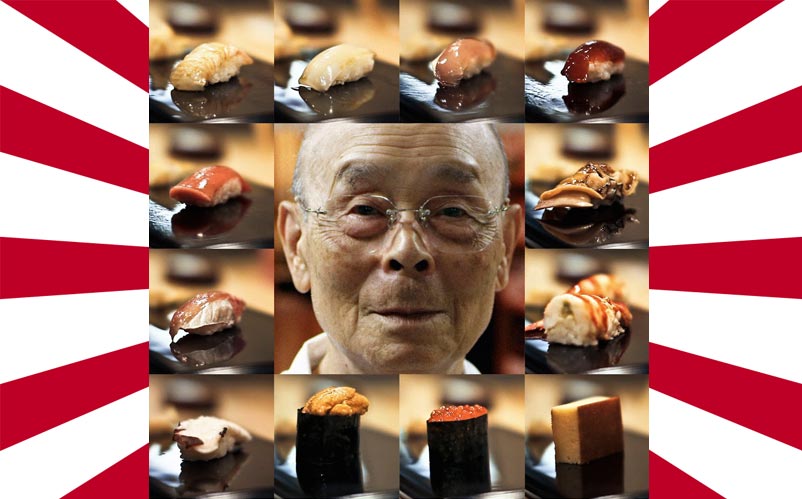








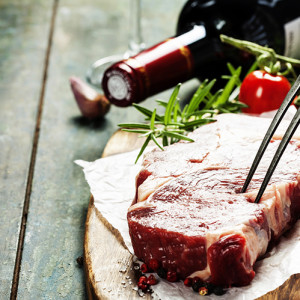
Leave a reply